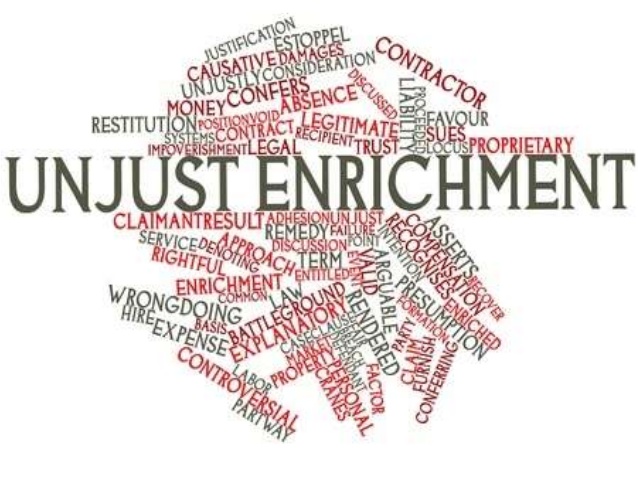
by kathyras@rogers.com | Apr 19, 2020 | Family Law

When married spouses separate or, in some instances, a common law relationship ends, one of the most significant issues the spouses will tackle is the division of property. If the spouses were married, that division is determined by Part I of the Family Law Act (“FLA”). In short, the FLA provides for an equal sharing of the increase of the net assets which accumulated during the marriage.
Of course, the value of the assets to be divided may change after the date of separation, sometimes significantly. If this happens before an agreement or order has been made which resolves the issue of property division, what happens? We are currently in the midst of the COVID-19 pandemic, which has resulted in the most significant upheaval to the world economy in living memory. Stock markets around the globe are more volatile than they have been in decades. The changes to the value of equity stocks in particular have been swift and substantial. A spouse who has a portfolio which has lost significant value post separation due to the market forces caused by the pandemic is likely to question whether determining the division of property based on the date of separation value of his or her assets is fair.
The FLA provides for an unequal division of assets where it would be unconscionable to divide assets equally. Of course, the million dollar question is, at which point does an equal division become unconscionable? The leading case, a decision of the Ontario Court of Appeal, Sierra v. Sierra, provides some guidance on the factors to be considered, while reminding us that the threshold is very high. In fact, very few decisions have been rendered in favour of the party seeking an unequal division. However, in light of the unprecedented events of the past two months, perhaps the threshold should be reconsidered, even if only on a temporary basis.
The Court of Appeal in Sierra makes the point that a temporary decrease in value is not enough. There is no clarity in the case law, however, as to what time-frame constitutes “temporary.” In the midst of a pandemic, should we be waiting it out and dividing property once market value returns to what it was before our economy was devasted? Although the court does not have jurisdiction to make such an order, if you are negotiating a resolution to this issue in a collaborative, settlement-oriented way, it could be an option, if both parties agree.
Covid-19 is likely to have an impact on how spouses negotiate their Separation Agreements, and when. Deciding whether to settle now, wait it out, or leave it in the hands of the court once we are able to bring matters to court again, will be part of the discussion.

Author | Simonetta A. Lanzi | Family Lawyer
Simonetta practices family law, including matters regarding custody and access, child support, spousal support, property division and child protection, as well as uncontested divorces. Contact

by kathyras@rogers.com | Jun 2, 2020 | Family Law, Mediation

One of the first decisions to be made when negotiating a separation agreement is the date of separation. This date is important for two reasons: first, one of the grounds parties can rely on to obtain a divorce is that they lived “separate and apart” for at least twelve months. Second, the increase in the value of property to be divided is calculated as of the date of separation in order to then determine property division.
More and more often couples remain in the same home even after having separated while they determine future parenting arrangements and for financial reasons. For family law purposes, it is indeed possible to be separated while living under the same roof. It all comes down to how we define “living separate and apart.”
A host of factors is taken into account although even the most obvious, an actual physical separation, may not necessarily signify living separate and apart. There is case law supporting a conclusion that spouses who live in separate homes do not necessarily meet the definition of “living separate and apart.” Even the fact that both parents continue to attend family functions or other activities involving children does not necessarily mean that they are not separated, although it may be a factor.
There have been trials to determine the separation date. The dates suggested by each spouse could be as much as several years apart.
Given the impact of a separation date on the financial outcome of the separation, and on the timeline to obtain a divorce, it ought to be agreed to early in the negotiations.

Author | Simonetta A. Lanzi | Family Lawyer
Simonetta practices family law, including matters regarding custody and access, child support, spousal support, property division and child protection, as well as uncontested divorces. Contact

by kathyras@rogers.com | Jun 9, 2020 | Employment Law

Part 1: Salaried employees
In order to calculate the amount of child support payable, we need to consider many factors.
Let’s talk about income for salaried employees.
The Child Support Guidelines require us to use the line 150 income on your tax return to determine child support. The Guidelines give a specific figure payable as child support based on that income and on the number of children.
There is a difference, though, between line 150 income and your salary. Even in situations when the payor parent is on salary, his or her line 150 income may be more than the income shown on her or his T4.
An essential step when determining child support, and it is a step you are required to take every year, is to provide each other with your Notice of Assessment and your complete tax return, including attachments. It is only by reviewing both documents that we can properly assess the amount of child support that ought to be paid.
For example, is part of the line 150 income generated by cashing in an RRSP? By dividends? By interest on investments? Are any of these income sources likely to be recurring?
Can any expense be legitimately deducted from the line 150 income before calculating the child support owing? For example, you are entitled to deduct union dues from your line 150 income before calculating child support. You are not, however, necessarily allowed to apply deductions that are permitted under the Income Tax Act.
Separating, or divorced, parties are often reluctant to give the other party copies of tax returns and Notices of Assessment but doing so is not only a legislated requirement when children are involved, it may sometimes result in a different (and more accurate) income being used to calculate the child support amount.
Written by Simonetta Lanzi

by kathyras@rogers.com | Apr 9, 2020 | Employment Law

Last year, I wrote about an Ontario Superior Court of Justice decision that dealt with the issue as to whether or not an employee can rescind a resignation. A link to that decision can be found here. The Court of Appeal recently reversed that lower court decision in English v. Manulife Financial Corporation. The following are the facts of this case.
On September 22, 2016, the employee, Ms. English, tendered her written resignation, expressing her intention to retire effective December 31, 2016. Her decision to retire followed Manulife’s decision to convert to a new computer system that she did not want to retrain for. After giving Ms. English time to reflect on whether or not she wanted to retire, her supervisor later accepted the resignation.
When Manulife later opted not to proceed with the conversion to the new computer system, Ms. English decided against retiring and verbally informed her supervisor that she withdrew her resignation. Manulife refused to accept Ms. English’s withdrawal of her resignation and advised that her December 31, 2016 retirement date would be honoured instead.
Ms. English sued for wrongful dismissal, a claim that was ultimately dismissed on the basis that the evidence established that Ms. English’s offer of a notice of resignation and an acceptance of that offer by Manulife constituted a binding contract that could not be resiled from. As I previously wrote, the court concluded that although the employer had the option to allow the employee to resile from or withdraw her resignation, the employer was not legally obligated to do so. The employer was entitled to rely on the resignation and to plan for the future accordingly.
On appeal, the Court of Appeal held that lower court erred in concluding that Ms. English had truly resigned on September 22, 2016. The basis for her resignation was the contemplated computer conversion. At the time of her resignation, her supervisor advised her that she could change her mind. Once the cancellation of the conversion was announced, the basis for Ms. English’s resignation no longer existed and Manulife was bound by the supervisor’s promise that Ms. English could change her mind, which she did. In turn, Manulife’s refusal to continue Ms. English’s employment amounted to a wrongful dismissal.
In my previous article, I wrote that a resignation is not to be taken lightly, because an employer is not obliged to continue employment after the employee changes his or her mind about quitting. While this remains true, this case shows that an employee has not truly quit unless the resignation is clear and unequivocal, without any conditions attached.
This article is intended only to provide general information and does not constitute legal advice. Should you require advice specific to your situation, please feel free to contact me to discuss the matter further.

by kathyras@rogers.com | Apr 9, 2020 | Employment Law

One of the hot button topics in employment law for the last several years is the enforceability of termination clauses or notice provisions in employment agreements. Such clauses attempt to limit an employee’s entitlements upon dismissal, often to the minimum standards set out in the Employment Standards Act, 2000. In recent years, the case law surrounding this topic continues to develop, particularly at the Court of Appeal.
The Court of Appeal continued to clarify the law on this topic with the addition of its decision in Rossman v. Canadian Solar Inc. In this case, the employee, Mr. Rossman, began working for Canadian Solar in May 2010 as a Regional Sales Manager after signing an employment agreement that included a termination clause. In August 2012, he accepted a project management role with the company and signed a new employment agreement with a termination clause using the same language as before.
The termination clause in both agreements stated the following:
9. Termination of Employment
9.01 The parties understand and agree that employment pursuant to this agreement may be terminated in the following manner in the specified circumstances:
…
(c) by the Employer, after the probation period, in its absolute discretion and for any reason on giving the Employee written notice for a period which is the greater of:
(i) 2 weeks, or
(ii) In accordance with the provisions of the Employment Standards Act (Ontario) or other applicable legislation,
or on paying to the Employee the equivalent termination pay in lieu of such period of notice. The payments contemplated in this paragraph include all entitlement to either notice of pay in lieu of notice and severance pay under the Employment Standards Act Ontario. In the event the minimum statutory requirements as at the date of termination provide for any greater right or benefit than that provided in this agreement, such statutory requirements will replace the notice or payments in lieu of notice contemplated under this agreement. The Employee agrees to accept the notice or pay in lieu of notice as set out in this paragraph as full and final settlement of all amounts owing by the Employer on termination, including any payment in lieu of notice of termination, entitlement of the Employee under any applicable statute and any rights which the Employee may have at common law, and the Employee thereby waives any claim to any other payment or benefits from the Employer. Benefits shall cease 4 weeks from the written notice. [Emphasis added.]
When Mr. Rossman was dismissed without cause in February 2014, he started a wrongful dismissal action against Canadian Solar and later brought a motion for summary judgment. The judge hearing the motion concluded that Mr. Rossman was indeed wrongfully dismissed and that the termination clause was not enforceable because it attempted to contract out of the minimum standards of the Employment Standards Act, 2000 by limiting Mr. Rossman’s benefits coverage to four weeks.
Canadian Solar appealed the decision on the basis that Mr. Rossman was employed for less than four years and therefore the termination clause provided him with a greater entitlement to benefits than what the legislation prescribed (i.e., three weeks of benefits coverage). The Court of Appeal disagreed.
In doing so, the Court of Appeal highlighted the following principles:
It is presumed that an employer cannot terminate employment without reasonable notice;
To rebut this presumption, employers and employees are free to agree to any notice period, as long as the agreement meets the minimum standards set out in the Employment Standards Act, 2000;
Otherwise, the presumption is not rebutted and the employee is entitled to reasonable notice of termination;
In that case, the employee is entitled to pay in lieu of notice for the reasonable notice period under common law.
The Court of Appeal also emphasized that if any part of the termination clause conflicts with the minimum standards set out in the legislation, then it is not just the offending part that is struck out, but the entire termination clause as well.
In rejecting Canadian Solar’s argument, the Court of Appeal held that the termination clause must be read as a whole and in the context of the circumstances as they existed when the agreement was created. In other words, it is irrelevant that the termination clause accorded with the minimum standards in certain circumstances – in this case, at the time of termination. It must accord with the minimum standards whatever the circumstances.
In addition, the Court of Appeal concluded that the termination clause was also ambiguous and therefore applied an interpretation favourable to Mr. Rossman in accordance with the contra proferentem rule.
In dismissing Canadian Solar’s appeal, the Court of Appeal upheld the motion judge’s award of 5 months of pay in lieu of notice.
The takeaway from this case, particularly for employers, is that a termination clause that attempts to limit an employee’s entitlements upon dismissal without cause to the minimum standards set out in the Employment Standards Act, 2000 must be drafted with great care to ensure that no part of an employee’s remuneration package is overlooked. The risk is that the termination clause may be deemed unenforceable and the employee may be entitled to common law notice regardless. Since remuneration packages vary from employer to employer and employee to employee, a precedent termination clause is not necessarily going to be fit for its intended purpose.
This article is intended only to provide general information and does not constitute legal advice. Should you require advice specific to your situation, please feel free to contact me to discuss the matter further.

by kathyras@rogers.com | Dec 6, 2016 | Employment Law
It is not at all unusual for an employee to reside in one country, but work in another. In fact, it is not unusual for an employee to regularly work in more than one country. It is also common for the employer to maintain its head offices in a different country than the one where the employee resides.
Situations like these can give rise to conflict of laws questions such as:
“Which law should apply – the law of the country where the employee is situated, or the law of the country where the employer is located?”
“Should the court where the employer’s head offices are located have jurisdiction over the case, or the court where the employee resides?”
Generally speaking, these questions are often determined by the jurisdiction where the employment agreement was made or entered into. Sometimes, the employment contract itself specifies which country’s laws will govern. Other times, however, the answer is not always clear. A recent decision of the Divisional Court, found here, provides a good illustration of this.
In this case, the employee signed the employment contract in Ontario. However, the employee also worked in the state of New York. When the employee was dismissed for a cause, a wrongful dismissal action was started in Ontario.
In response, the employer brought a motion to stay the court proceedings on the basis that the court in New York was the proper forum for the proceedings since that was where the employee worked. The Master in Ontario hearing the motion had to determine whether the balance of convenience favoured conducting the litigation in Ontario or in New York.
The Divisional Court upheld the Master’s decision to dismiss the employer’s motion and agreed with the Master’s analysis that there was an advantage that the courts in Ontario had over the courts in New York in properly determining the issues in this case. Specifically, since Ontario law applied to the employment relationship, it would be necessary to consider the principles of wrongful dismissal and the entitlement to reasonable notice. These are concepts that New York judges, who are more accustomed to “at will” dismissals, would not be as well acquainted with compared to Ontario judges.
The point to be taken away from this case is that these kinds of problems can be avoided with a carefully-worded employment agreement, underscoring the importance of obtaining legal advice before entering into an employment relationship. This type of risk management can save both employers and employees significant time and money down the road.
This article is intended only to provide general information and does not constitute legal advice. Should you require advice specific to your situation, please feel free to contact me to discuss the matter further.
Written by Jeffrey Robles and originally published on the blog at http://jeffreyrobles.com. Jeffrey represents clients in the areas of employment law and personal injury in the Ontario Superior Court of Justice.

by kathyras@rogers.com | Dec 19, 2016 | Civil Litigation
As a father myself, the idea of children being held liable hits home for me. We generally consider children to be innocent and incapable of the kinds of wrongdoing that we generally associate with adults. The law, however, does not have the luxury of turning a blind eye to this. Last month, the Court of Appeal dealt with the issue of the possible contributory negligence of a child who was injured while crossing the road. A link to this decision can be found here.
Just like adults, children can be found negligent in law. All people, adults and children alike, are held to a certain standard of care. In the case of children, the test is whether or not a child has exercised the care expected from children of similar age, intelligence and experience. If you take a moment to consider this, you can see how difficult an analysis this can be.
In the case before the Court of Appeal, the litigants agreed that the injured boy was old enough to be found contributorily negligent. However, they disagreed as to whether or not he was in fact contributorily negligent.
The Court of Appeal deferred to the trial judge’s findings that the boy was of average intelligence, had been taught to look both ways before crossing, did not remember to look before crossing, and knew better. At the same time, the trial judge concluded that the boy did not have experience crossing a busy four-lane highway unsupervised. The appellate court also deferred to this finding.
As parents, we sometimes get frustrated with our children for doing things that we feel “they should know better” than to do. I will readily admit that I am guilty of this with my own children from time to time.
Yet, the Court of Appeal reminds us that “children lack the judgment of adults and that they are notoriously forgetful when they are distracted or confused, and therefore do not follow instructions on the basis of which “they should know better”, are concepts that are generally accepted and that have been recognized by the courts as factors distinguishing the conduct of children from that of adults in the negligence liability context”.
It is important to keep in mind that the thought processes of children are and should be treated differently – not only in fact, but also in law. This is underscored by the fact that children are afforded special legal representation not available to adults, by way of the Office of the Children’s Lawyer. Bearing in mind their vulnerability, children should be treated with utmost care and concern by the law, and not just their parents.
This article is intended only to provide general information and does not constitute legal advice. Should you require advice specific to your situation, please feel free to contact me to discuss the matter further.
Written by Jeffrey Robles and originally published on the blog at http://jeffreyrobles.com. Jeffrey represents clients in the areas of employment law and personal injury in the Ontario Superior Court of Justice.

by kathyras@rogers.com | Apr 21, 2017 | Employment Law
For most employers, it is a common practice or policy to require medical documentation when an employee is off from work for an extended period of time due to illness or injury. There is, however, a delicate balance that an employer must strike between obtaining information needed to accommodate the employee’s disability and respecting the privacy of the employee’s health records. So the question is, “what medical information should an employer be allowed to obtain from an employee who is sick or injured?”
Recently, the Ontario Human Rights Commission released its policy position on the scope of medical documentation that an employer ought to be able to request from an employee when a disability-related accommodation is requested. A link to the policy position can be found here.
According to the Commission, too little information can prevent appropriate accommodations from being meaningfully implemented. On the other hand, overly broad requests for medical information can undermine the dignity and privacy of people with disabilities.
In its policy position, the Commission provides guidance to employers and employees on the type and scope of medical information that can reasonably be sought to support an accommodation request. The documentation should set out 5 things:
- That the employee has a disability;
- That there are certain limitations or needs related to the disability;
- Whether the employee can perform the essential duties or requirements of the job, with or without accommodation;
- The type of accommodation that may be needed to allow the employee to fulfill those essential duties or requirements of the job; and
- Regular updates about when the employee can be expected to come back to work if the employee is on sick leave.
As stated by the Commission, the key to this process is that the information requested must be the least intrusive to the employee’s privacy while still giving the employer enough information to make informed decisions about the accommodation sought. To quote the Commission, “the focus should always be on the functional limitations associated with the disability, rather than a person’s diagnosis.”
An employer does not have a right to the employee’s confidential medical information. This includes the cause of the disability, its symptoms or its treatment, unless the complexity of the the employee’s disability necessitates more information in order to develop and implement an accommodation.
This article is intended only to provide general information and does not constitute legal advice. Should you require advice specific to your situation, please feel free to contact me to discuss the matter further.
Written by Jeffrey Robles and originally published on the blog at http://jeffreyrobles.com. Jeffrey represents clients in the areas of employment law and personal injury in the Ontario Superior Court of Justice.

by kathyras@rogers.com | Apr 19, 2017 | Employment Law
This is a question that I am often asked by clients.
The Limitations Act, 2002, S.O. 2002, c. 24 provides that a person generally has 2 years from the day when that person knew or ought to have known that an injury, loss or damage had occurred. There are circumstances where the limitation period is extended beyond 2 years. There are other instances when the limitation period can be deferred. However, they usually do not apply to employment law cases.
In Bailey v. Milo-Food & Agricultural Infrastructure & Services Inc., the Ontario Superior Court of Justice dealt with a motion to dismiss a wrongful dismissal action on the basis that the 2 year limitation period had expired. The employer argued that the employee’s claim was statute-barred because the Statement of Claim was filed on December 21, 2015, more than 2 years after the notice of termination was given to the employee on March 18, 2013. On the other hand, the employee asserted that his claim was brought well within the 2 year limitation period because his employment did not actually end until March 22, 2015.
The motions judge reviewed the leading authorities on this issue, the principles from which can be summarized as follows:
- A limitation period commences when the cause of action arises. In a breach of contract, the cause of action arises when the contract was breached. For the purposes of a wrongful dismissal action, the employment contract is breached when the employer dismisses the employee without reasonable notice.
- A cause of action accrues and a limitation period starts to run when all of the elements of a wrong exist. Once a plaintiff and a defendant have been identified and a breach of contract has occurred, time will start to run.
Applying these principles, the motions judge concluded that the employment contract in this case was breached when the employee received the notice of termination on March 18, 2013. It was at that point in time that the employee could have determined that the amount of notice was insufficient and could have sued for wrongful dismissal. Instead, the employee refrained from doing so and waited more than 2 years before starting his lawsuit. In other words, time had run out. As a result, the employee’s claim was statute-barred and could not be allowed to continue.
In the end, the motions judge decided this issue in favour of the employer and dismissed the employee’s wrongful dismissal claim.
There are times when it makes sense to wait and hold off on starting a wrongful dismissal action. Perhaps there is an opportunity to negotiate a settlement and avoid the cost of litigation. Perhaps the employee has a good chance of finding a new job, which can guide the course of action to be taken. For employers and employees alike, obtaining legal advice from knowledgeable counsel can be a key component in developing the right strategy to deploy.
Written by Jeffrey Robles and originally published on the blog at http://jeffreyrobles.com. Jeffrey represents clients in the areas of employment law and personal injury in the Ontario Superior Court of Justice.
This article is intended only to provide general information and does not constitute legal advice. Should you require advice specific to your situation, please feel free to contact me to discuss the matter further.

by kathyras@rogers.com | Apr 28, 2017 | Civil Litigation
When people think of property rights between individuals, often matrimonial disputes come to mind. In Ontario, only married couples have a right to what is called “equalization of net family properties” as provided for under the Family Law Act. For unmarried couples, any right to the property of the other spouse after a breakdown of the relationship is most often obtained by way of a claim for unjust enrichment.
However, a claim for unjust enrichment is not limited to matrimonial disputes. This kind of claim can just as easily be advanced in a civil litigation context. In the past, I have used unjust enrichment where disputes arose between business partners after a deal involving property fell apart.
Claims of this nature can also arise between siblings involved in a family business. Often, before the dispute arose, the familial bonds of love, trust and understanding outweighed the need for documentation concerning ownership and governance of the business. Sadly, property, or its value, can cause those bonds to break apart.
What is unjust enrichment? It is a claim that seeks to address situations where one party has taken advantage of the resources of another party to the detriment of that other party. The courts have outlined the following elements of unjust enrichment, all of which must be established in order to succeed in such a claim:
There must be a benefit conferred from one party to another party. For example, this can be in the form of money, the acquisition or improvement of property, or valuable services rendered.
There must be a corresponding deprivation of that benefit experienced by the party conferring the benefit. For instance, if a party renders a service to another, that party has been deprived of the opportunity cost of their own time and effort.
Lastly, there must be no legal basis (referred to in the case law as a juristic reason) for the enrichment. The party receiving the benefit should be be able to show why they should be allowed to retain the benefit. Such reasons can include a contract for services rendered, or the intention of a gift.
If these elements are established, then a claim for unjust enrichment is proven. A court can then consider the appropriate remedy, whether it be monetary compensation based on the value of the benefit or enrichment conferred or a constructive trust (which is essentially a declaration of an interest in property despite the absence of legal title).
In a perfect world, all property disputes would be avoided, or at least determined, with appropriate documentation clearly setting out ownership and any obligations or entitlements. Nevertheless, in this imperfect world we live in, an unjust enrichment claim can be an effective way to address unfair or inequitable situations involving property.
This article is intended only to provide general information and does not constitute legal advice. Should you require advice specific to your situation, please feel free to contact me to discuss the matter further.
Written by Jeffrey Robles and originally published on the blog at http://jeffreyrobles.com. Jeffrey represents clients in the areas of employment law and personal injury in the Ontario Superior Court of Justice.

by kathyras@rogers.com | Nov 18, 2015 | Employment Law
 In a previous case comment, I wrote about how an employer’s declining financial health can reduce a court’s assessment of the reasonable notice period that an employee may be entitled to in a wrongful dismissal case.
In a previous case comment, I wrote about how an employer’s declining financial health can reduce a court’s assessment of the reasonable notice period that an employee may be entitled to in a wrongful dismissal case.
By contrast, in a recent case, Zoldowski v. Strongco Corporation, 2015 ONSC 5485, the Ontario Superior Court of Justice considered how an economic downturn can increase a court’s assessment of reasonable notice.
Facts of the Case
The plaintiff, Ms. Zoldowski, was 39 years old when she was let go from her job as a Parts Administrator after 22 years of employment. The defendant employer, Strongco Corporation, did not assert cause for terminating Ms. Zoldowski’s employment, but paid her only the minimum statutory entitlements under the Employment Standards Act, 2000.
Not surprisingly, Ms. Zoldowski was not satisfied with what she received and sued her employer.
Issue Before the Court
The main issue that the court had to determine was how much notice, or more specifically pay in lieu of notice, Ms. Zoldowski should have received.
Ms. Zoldowski’s lawyer argued that 15 months of pay in lieu of notice was appropriate based on the facts. The employer’s counsel argued for 10 months only. Interestingly, the case does not mention if the employer paid the difference between 10 months of pay in lieu of notice (that it ostensibly acknowledged owing) and the minimum statutory entitlements.
The court concluded that damages equivalent to 14 months of pay in lieu of notice were appropriate in light of the general economic downturn in the Greater Toronto Area and Southern Ontario for the first half of 2015. In doing so, the court stated, “As part of this determination the court may consider the economic climate the employee is put into when terminated. If there is an economic downturn, then that may make it more difficult to find a job and may justify a longer notice period…”
Practical Considerations
In my view, this case underscores the fact that the list of considerations that may go into an assessment of a reasonable notice period is not finite. As the court stated, “This list is non-exhaustive, and each case will depend upon its own particular circumstances.”
In addition, employers would be well-advised to simply pay what they believe employees are entitled to upon termination and not just the minimum statutory entitlements. Doing so can deter a wrongful dismissal action because it may no longer make sense for an employee to incur substantial legal fees when the best possible result is now a fraction of what it was when only the minimum statutory entitlement was paid.
This article is intended only to provide general information and does not constitute legal advice. Should you require advice specific to your situation, please feel free to contact me to discuss the matter further.
Written by Jeffrey Robles and originally published on the blog at http://jeffreyrobles.com. Jeffrey represents clients in the areas of employment law and personal injury in the Ontario Superior Court of Justice.

by kathyras@rogers.com | Aug 6, 2015 | Business Law

Preliminary Considerations
Acquiring a privately held business in Ontario can be accomplished through an asset or share transaction, depending on both tax and non-tax considerations. Generally speaking, purchasers prefer to buy assets and a vendor prefers to sell shares. This varies depending on the circumstances of the transaction and the bargaining power of each party.
Asset Transaction
An asset transaction allows the purchaser to select only those assets and liabilities that it wants to acquire. The remaining liabilities, unless they are expressly assumed, remain the responsibility of the vendor. This allows for flexibility and since liability is fixed, there is no uncertainty to the purchaser as to the nature and extent of the liabilities they will inherit. There are of course, certain exceptions as to the liabilities the purchaser has to undertake e.g. collective agreements of unionized employees.
Purchaser’s preference
A purchaser wants to minimize the purchase price and maximize tax deductions from the assets in future years. A purchaser will often prefer to structure the transaction as an asset purchase and take the tax deductions against income in future years i.e. through a capital cost allowance on depreciable assets; cost of inventory. In comparison to a share transaction, shares are non-depreciable property, there is no tax relief associated with the cost of the shares.
Share Transaction
A share deal involves acquiring the corporation itself, with all of the underlying assets and its liabilities. Ownership of the corporation’s shares result in direct ownership of all of the corporation’s assets and undertakings, whether known or unknown. Therefore, the purchaser must complete due diligence searches and obtain representations and warranties from the owners of the corporation’s shares to safeguard against potential claims in the future. It is common for the parties to negotiate indemnity agreements, where the vendor will agree to pay for any unforeseen liabilities that may arise after the sale for a specified duration of time.
Vendor’s preference
A vendor is usually concerned about the immediate income tax consequences in the year of sale and prefers a share sale as capital gains are taxed more favourably. There are conditions that must be satisfied at the time the shareholder sells his or her shares and throughout the preceding 24-month period that a corporation must satisfy to qualify for the tax deduction.
Additionally, when the shareholder sells shares in a company, the proceeds are paid directly to the shareholder and are only taxed at the shareholder level. This is in comparison to an asset sale where there are two levels of taxation.
These are only basic considerations and may not apply to every situation. Apart from negotiating the purchase price, employment issues and indemnities; structuring the sale or purchase of a business depends on numerous factors.
Purchasing a Business in Ontario
Author: Laura Chiu, Reilly and Partners. Laura joined Reilly & Partners Professional Corporation as an associate after her call to the bar in 2013. Prior to this, Laura gained experience as a summer and articling student in the areas of real estate, administrative law, commercial and civil litigation, and estates and trusts.























